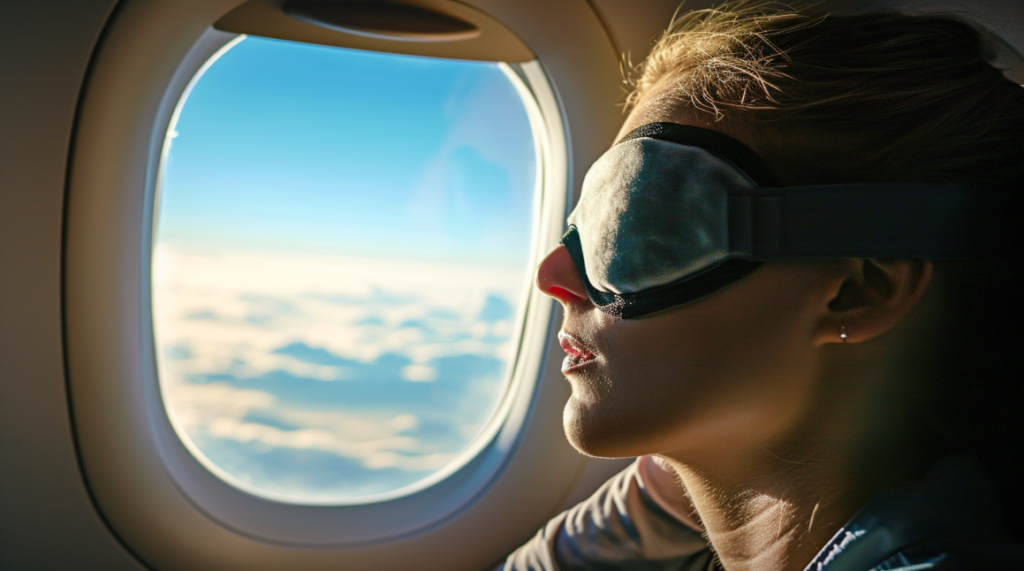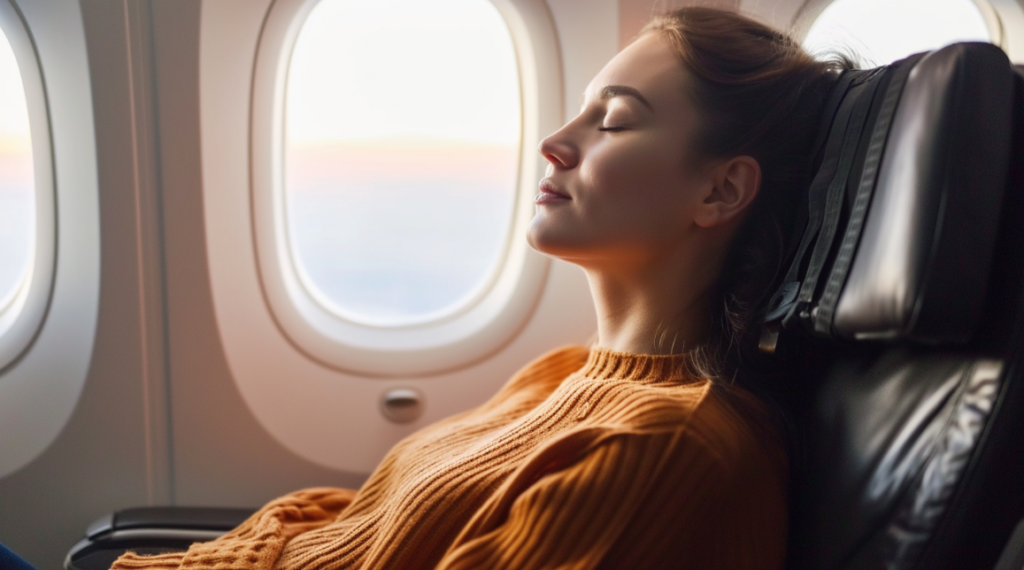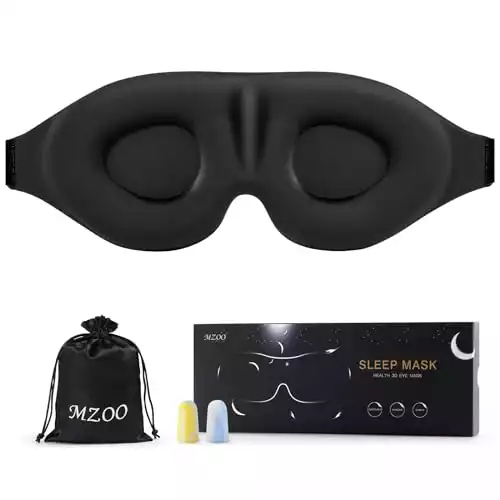Neuroscientist and Stanford professor Andrew Huberman has conducted extensive research on sleep and circadian rhythms to provide evidence-based recommendations for avoiding jet lag.
Jet lag can turn a fun vacation or important business trip into a disorienting headache.
Adjusting your sleep schedule to a new time zone often takes days and causes fatigue, insomnia, digestive issues, poor cognitive performance, and just feeling “off.”
Fortunately, understanding the science behind jet lag gives us tools to minimize its disruptive effects through strategic circadian clock-shifting before and during travel across multiple time zones.
In this post, we will share Huberman’s recommendations and actionable steps to feel more rested when you travel.
Let’s dive in!
Jet Lag Must Haves
Sleeping Mask
Ear Plugs
Travel Pillow
Homeopathic Remedy
Andrew Huberman Jetlag Science
According to Andrew Huberman, jet lag occurs when your body’s internal circadian clock becomes misaligned with the external day/night cycle in a new time zone.
Essentially, your 24-hour biological clock gets confused.
Your brain contains a master circadian clock in a region called the suprachiasmatic nucleus (SCN) that controls the timing of sleep/wake cycles, hormone release, digestion, body temperature regulation, and other daily rhythms in the body.
Light exposure perceived by your eyes is the primary environmental signal that resets and synchronizes this inner SCN clock to match each 24-hour period.
When you rapidly travel across several time zones, the mismatch between your ingrained SCN clock and the local day/night cycle disrupts your circadian alignment.
Your body doesn’t immediately adjust to this new light/dark schedule, so you feel tired during the day yet wide awake at night, along with other temporary circadian misalignments.
This internal battle with your body’s natural rhythm is what causes the symptoms of jet lag.
Related: Andrew Huberman Hypnosis Experience and Recommendations
East vs. West: Direction Matters

The direction you travel makes a significant difference in how intensely you experience jet lag symptoms.
This is due to how your body’s natural circadian rhythms interact with time zone changes.
Traveling east is typically harder on your circadian clock than traveling west.
When you fly eastward, you are shortening your day and trying to go to bed earlier, which works against your body’s natural tendency to stay up late.
Going to sleep several hours earlier than your usual bedtime fights against your ingrained circadian drive for wakefulness at that time.
This contributes to insomnia and fatigue when traveling east across multiple time zones.
In contrast, westward travel lengthens your day.
Staying up later meshes better with your body’s natural circadian rhythm.
While you may feel tired earlier in the evening after westward travel, your body finds it easier to delay sleep than to advance it.
Research has also shown that frequent eastward travel that induces circadian misalignment may shorten lifespan more than frequent westward travel.
Frequent long-haul eastward flights that disrupt your circadian rhythms appear to have detrimental effects over time.
Related: Bryan Johnson Pillow Recommendation for Optimal Sleep
Andrew Huberman Temperature Minimum

Your temperature minimum refers to the lowest body temperature reached during your circadian cycle, occurring about 1.5-2 hours before your habitual wake time.
By determining your temperature minimum, you have an anchor point that can be used to strategically shift your circadian clock earlier or later using properly timed light exposure, food intake, exercise, and sleep.
Related: Andrew Huberman Melatonin: Risks & Recommendations
How to Find Temperature Minimum
You can easily estimate your temperature minimum:
- Average your wake-up time over 3-5 typical days
- Subtract 90 minutes – 2 hours from your average wake time.
That estimated time point is your circadian temperature minimum.
This gives you a personalized reference point to start shifting your own clock.
Knowing your temperature minimum empowers you to strategically time behaviors to either advance or delay your circadian clock and internal sleep drive.
This is key for minimizing jet lag.
Related: Bryan Johnson Melatonin Recommendations
Huberman Strategies to Adjust Circadian Clock
Once you know your temperature minimum, you can strategically use light exposure, exercise, and meal timing to shift your circadian clock earlier or later.
- Light exposure in the 4-6 hours after your temperature minimum will gradually shift your clock earlier. Your bedtime will get earlier and wakeup time earlier.
- Light exposure in the 4-6 hours before your temperature minimum will gradually shift your clock later. Your bedtime will get later and wakeup time later.
- Exercise in the hours after your temperature minimum will also shift your clock earlier. Exercise before your temperature minimum will shift it later.
- Meal timing can reinforce circadian shifting. Eating in the hours after the temperature minimum advances your clock, while eating before it delays your clock.
These tools allow you to intentionally shift your circadian clock in alignment with a new time zone before you even depart.
Preparing For Time Zone Changes
To minimize jet lag, preparation is key. Here are some steps you can take at home before traveling to pre-adjust your circadian clock:
- Start gradually shifting your clock days before your trip using properly timed light exposure, exercise, and meals.
- For eastward travel: Seek to advance your circadian clock earlier at home by waking up earlier and getting light, exercise and food in the hours after your temperature minimum.
- For westward travel: Seek to delay your circadian clock later at home by staying up later and getting light, exercise and food in the hours before your temperature minimum.
- Once at your destination, stick to the local schedule as closely as possible for sleep, wakeup, activity, and eating times. This will reinforce the circadian realignment.
Carefully pre-shifting your circadian rhythm at home before you take off can significantly reduce jet lag’s disorienting effects when you arrive.











